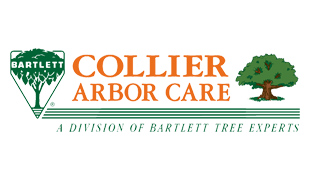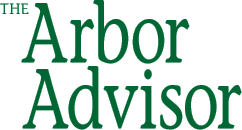|
Current Issue - Spring/Summer 2013 Show Back Issues |
|
||

New level of Certified ArboristCollier Arbor Care has long supported the highest level of training, industry knowledge and arborist certification. To that end, Terrill Collier, president of Collier Arbor Care, spent three years serving on the BCMA (Board Certified Master Arborist) committee developing the exam now being used by the ISA (International Society of Arboriculture) to test qualifying applicants. Terrill Collier received his own Board Certified Master Arborist designation earlier this year (PN-0101B) from the ISA. The Board Certified Master Arborist is a higher certification level than that of the Certified Arborist. Currently Collier Arbor Care has 13 certified arborists and one Master arborist on staff. 
Freedom From WeedsCollierís painless solution for the weeds in your landscape bedsWho wants to spend their precious time fighting weeds in the landscape beds? Let Collier Arbor Care provide you with the free time to do the things you want to do instead of the back breaking chore of weed pulling. Our program of both pre and post emergent weed applications provides control throughout the year at a price that is easy on your budget. Our pre-emergent (weed preventer) treatment is applied in the spring and the fall. It prevents new weeds from growing by creating a weed prevention barrier in the top few inches of the soil. It does not kill existing weeds. The post emergent visits during the growing season clean up the existing weeds and helps maintain a weed free area. Call CollierArbor Care to take care of your weed problems. Study Links Greenery to Lower Crime RatesReprinted with permission from the ISAItís been widely believed that trees in urban areas provide cover for would-be criminals, thus increasing the likelihood of crime. But a series of scientific studies by the University of Illinois at Urbana-Champaign demonstrates that the opposite may, in fact, be true. Residents living in "greener" surroundings actually report lower levels of fear, fewer incivilities, and less violent behavior. The study also found that the greener a buildingís surroundings, the fewer reported crimes. There are a number of reasons why green spaces may inhibit crime in urban areas. Vegetation has been shown to alleviate mental fatigue, one of the precursors to violent behavior. And because green spaces are used more, thereís a sense that there are more eyes on the street, which may deter would-be criminals from committing crimes where they think they are being watched. Greenery also promotes a greater sense of community ñ even in poorer, inner-city neighborhoods ñ leading residents to feel safer and behave more civilly toward one another. For all of their social benefits, it's extremely important that urban planners recognize the value of green spaces in cultivating healthier, safer communities. We must all work together toward building, protecting, and maintaining natural settings in our urban areas so we can improve the quality of life for the many people who live there. This study, conducted by F.E. Kuo and W.C. Sullivan in partnership with NUCFAC, was reported in "Environment and crime in the inner city: Does vegetation reduce crime?", Environment & Behavior 33(3):343-367. |
 Spectacular spring blossoms of the Weeping Flowering Cherry
Spectacular spring blossoms of the Weeping Flowering Cherry
 The Weeping Flowering Cherry makes a brilliant centerpiece
The Weeping Flowering Cherry makes a brilliant centerpiece
 (Left) Pure white flowers of the Mt. Fuji put on a spectacular early spring show in the garden
(Left) Pure white flowers of the Mt. Fuji put on a spectacular early spring show in the garden
(Right) Vibrant pink blossoms characterize the Kwanzan bloom Featured Tree: Flowering CherryWith a multitude of species and varieties, you can commonly find a flowering cherry growing in most any city block in the Pacific Northwest. The Flowering Cherry is mainly planted in the garden for its beautiful blooms ranging from a pure white (Prunus serrulata ëMt. Fujií) to a dark purplish pink (Prunus serrulata ëKwanzaní). They bloom from late winter/early spring (Prunus subhirtella ëAutumnalisí) thru late spring. The leaves on most varieties are dark green to a yellowish bronze 2-4 inches long. Their varied growth habits range from; upright, vase-shape, broad-spreading, to even weeping varieties. Unfortunately, there is a down side to the flowering cherry, with itís susceptibility to many spring time insects, diseases and viruses that affect the leaves, flowers and stems. The worst of the infectious diseases is 'Brown Blossom Blight' which destroys the spring blooms and kills leaves and twigs of the cu rrent yearís growth. This blight is treatable with multiple protective treatments but, can cause a gradual health decline if left untreated. Other problems include leaf feeding caterpillars, fungal shot hole, bacterial blights and untreatable viruses that cause leaf holes. Additionally because of its surface rooting habit, it can cause problems lifting sidewalks and driveways or have nuisance surface roots in lawn areas. One must weigh the virtues of a tree with magnificent beautiful blooms versus the maintenance issues of disease and root problems. If you just have to have this commonly planted tree be prepared for the extra time and money it will take to professionally maintain this tree in your landscape.  Red ring rot (Phellinus pini) is the most damaging conk.
Red ring rot (Phellinus pini) is the most damaging conk.
 Artist's conk (Ganoderma applanatum) will turn brown if scratched.
Artist's conk (Ganoderma applanatum) will turn brown if scratched.
Conks: A Sign of Tree DecayWood decay in trees is a concern for both tree health and safety reasons. Decayed branches, trunks and whole trees may break and fall. One of the indicators of internal tree decay is the presence of a conk or woody mushroom. Wood decay conks and mushrooms can be found; on the soil above roots, at the base of the tree, and on trunks or branches. The presence of conks can indicate potentially serious problems. However extensive decay may occur without their appearance. The following are common conks and mushrooms that are indicators for decay in trees:Red ring rot (Phellinus pini) ó The conk is commonly found on the trunks of Douglas fir but will also show up on spruce and hemlock. It is considered the most damaging heart rot fungus to conifers in the northwest. The conk is hoof-shaped, dark brown on top and reddish-brown underneath, and 2 to 10-inches in width. Artistís conk (Ganoderma applanatum) ó This conk causes a white rot decaying the trunks of a wide variety of trees from conifers to hardwoods, including alder, birch, maple, oak, willow, fir and pine. The conk is semi-circular in shape and 2 to 30-inches wide. The top surface is a varnished brown to reddish color but the underside is white. If scratched the white surface turns brown so people use them to draw onó hence the name "artist's conk". Armillaria (or shoestring root rot) ó A fungus that rots the roots of many different trees and plants. Most often it is found infecting oaks, dogwoods, rhododendron, lilac and conifers like Douglas fir, but is also reported on over 700 species of plants. Plants that are under stress and are growing poorly are most susceptible. The classic situation of Armillaria killing trees, is when over watering occurs due to the installation of turf with an irrigation system. Honey colored mushrooms appear in the fall at the base of the tree. Also look for white fungus fans under the bark of roots and trunk wood. If you see these indicators on your trees please call a Collier Arborist to assess your tree problem. The First Accredited Tree Care Company on the West Coast - Collier Arbor Care Among Select Few
Collier Arbor Care became the eighth tree care firm in the United States to earn accreditation from the Tree Care Industry Association (TCIA), a national organization which represents more than 2,000 tree care companies. Collier became the only west coast company to be accredited under a TCIA program which judged the firm on its ethical and up to date business practices, worker and customer property safety procedures, employee training and quality of its work. "This is an affirmation that we're a professional, quality oriented company with modern, efficient and ethical business practices and that we're a safe company. It differentiates us from those who just operate out of the back of their truck with a chain saw, no insurance and no training or depth of knowledge," said Terrill Collier, president of the 66-year-old company, the oldest and one of the largest in the metropolitan area. Accreditation followed a day-long on-site inspection by TCIA representatives. The audit covered the firm's insurance coverage, business practices, employee training, compliance with state and federal safety regulations, business ethics and customer satisfaction. "It was a very thorough process. They interviewed our customers and employees, examined personnel and insurance records, visited our facilities and our crews on the job sites. We spent four months preparing for this audit," Collier said. TCIA representatives said the new program "provides tree care companies with a means of evaluating themselves against industry standards and best business practices and gives consumers a way to find companies trustworthy in their business and tree care practices. Additionally, they said, accreditation helps insurance companies identify safer companies and provides governmental and institutional agencies a means of finding companies that meet industry standards for safety and performance. Terrill Collier is a member of the TCIA board of directors. |
|
Home |
Services |
The Arbor Advisor |
Garden Calendar |
About Us |
Fact Sheets |
Contact Us |
Site Map Collier Arbor Care Portland 503-722-7267 Vancouver (360) 693-6056 Site contents and design ©2013 Collier Arbor Care |







 top »
top »